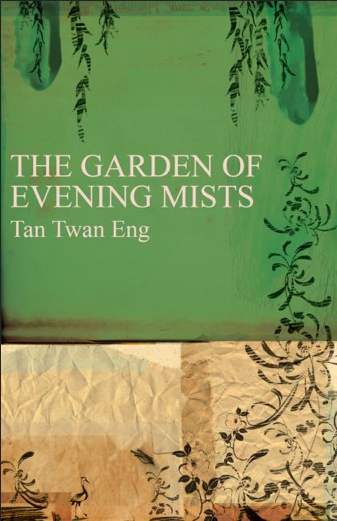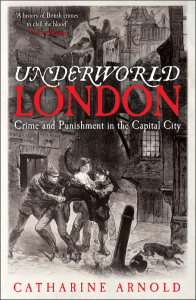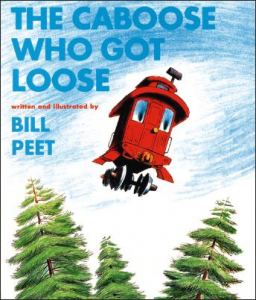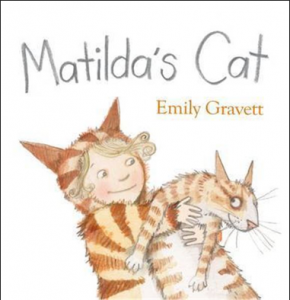Y.S. Lee's Blog, page 19
August 7, 2013
Ahem
Hello there, friends. I’m sorry for my lapse last week. I had an outrageously slow internet connection (now partly fixed – it’s only somewhat slow) that made even a simple email check a struggle. Today, I thought I’d show you what I’ve been up to.
We went a bit crazy with the tomatoes, this year. It was our first year starting them from seeds and we planted a lot, thinking that only about one in three would make it. Ahem. We have about 30 tomato plants producing right now. I’m not sure what we’ll do with them all: we’ll either learn to can, or take to leaving them on neighbours’ doorsteps in the dead of night, I guess. Anyway, the tomato bed was a million-tentacled green monster, and it took me most of a day’s work to prune and stake them. I hope that doesn’t sound like a complaint: it’s a strangely addictive job, and it pains me to admit that there are two sad, drooping, crawling plants I haven’t yet found the time to attend to.
Here’s another gratuitous tomato shot:
Isn’t it exciting? We’ve had a few cherry tomatoes already and they’re lovely: sweet and complex, and all the more delicious for being the (literal) fruit of our labours.
And then there’s the garlic: 50-odd cloves planted last autumn, which we harvested last week. They’re currently drying out and I think the effect is like oddball musical notation.
Apart from frantically trying to reclaim the garden, I’ve also begun work on The Next Book. Here are the 3 novels I’ve ordered from the public library to read next:
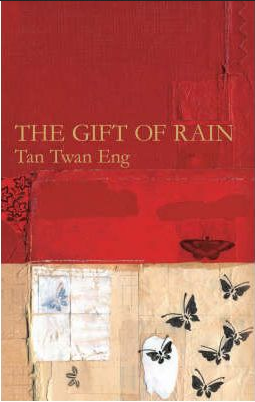 Tan Twan Eng’s The Gift of Rain
Tan Twan Eng’s The Gift of Rain
Tan’s sequel to The Gift of Rain, The Garden of Evening Mists (2012)
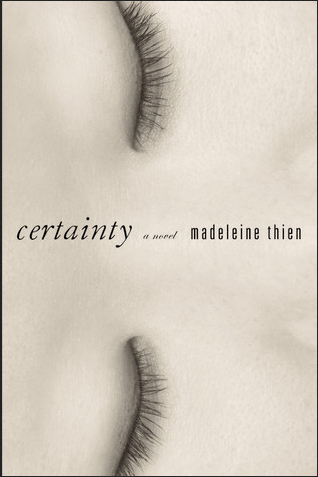 Madeleine Thien’s Certainty (2006)
Madeleine Thien’s Certainty (2006)
If you didn’t already know (or perhaps if you did), can you guess what I’m working on next?
July 24, 2013
Shopping (the bookish kind)
Hello, friends. It will probably not surprise you to know that when I go on holiday, I like to bring home books as souvenirs. I love plucking a book from the shelf and remembering both the book and the place where I bought it. For me, the combined memory becomes that much more precious, and I seem to remember more details about the holiday when they’re paired with a book.
Here’s our family’s shopping list from a recent jaunt to Victoria, B.C., where we spent a weekend with old friends. We were walking down the street in Oak Bay, looking for the marina, when we were pulled, as if by magnets, into Ivy’s Bookshop. Ivy’s is a friendly and beautifully curated neighbourhood bookstore that inspires you with confidence in the power of reading. Highly recommended!
Catharine Arnold, Underworld London: Crime and Punishment in the Capital City
Nick plucked this one from the shelf before I’d even spotted it, and I was transfixed. It’s best read in small snatches (for me, at least), as I find the gleeful descriptions of gore and human perfidy a bit too much after a few minutes. It’s a popular history and thus only lightly endnoted, and if I were using any of this as source material I’d double-check it all. However, it’s a pretty delicious snack of a book.
Lorraine Harrison, Latin for Gardeners: Over 3000 Plant Names Explained and Explored
Is this a retired person’s book or what? As we lurch gracelessly towards middle age, Nick and I find ourselves reading more and more non-fiction, and developing a taste for botanical illustrations. (Actually, that’s untrue: I’ve always be transfixed by delicate botanical illustrations.) But we have been gardening more, and this seemed rather inevitable.
Bill Peet, The Caboose Who Got Loose
Our five-year-old chose this because it’s about a train, and I really like the illustrations. I’m ambivalent about the seemingly endless doggerel rhyme, but I do love the subversive ending. If this were a book in the Thomas the Tank Engine franchise, Katy Caboose would learn about Duty and Being Useful, and end up knowing her place in the English class system. I love that in this new world train story, Katy actually escapes.
Emily Gravett, Matilda’s Cat
And this one’s for our two-year-old. We love Emily Gravett’s artwork and her wry way with narrative. It’s really quite perfect.
So that’s what we’ve been reading for the past few days. What have you been reading?
July 17, 2013
Writing Rivals in the City
Hello, friends. This is the week in which I come clean and try to explain why it took me so very long to write The Agency: Rivals in the City. This is going to be a difficult post to write. I hate thinking about how many times I missed my deadline, and the (literally) hundreds of hours I spent tearing my hair out in front of the computer. But I think it’s useful to analyze failures, and figure out what worked in the end. And with any luck, someone else might find my experience instructive. Perhaps we can think of it as a how-not-to guide to writing a novel!
January 2011
My original plan for writing Rivals coalesced in January 2011. I expected to give birth to my second child in May 2011 and knew that I wanted a six-month maternity leave after her birth. (This sounds like an exquisite luxury to you American readers, right? In Canada, most women are entitled to 12 months of paid maternity leave.) So I negotiated a deadline of May 2012. My plan was to write a significant portion of the book while pregnant, take 6 months completely off, and still have six months to finish the book in early 2012.
Optimistic outlook: I knew Mary Quinn’s world so well. I would be starting at an advantage because I didn’t have as much research to do at the outset. This was the fourth and last book in the series, and hopefully that momentum would carry me through.
Problems: I am a slow writer under the best of conditions, and I did not have the best of conditions: I was exhausted throughout the pregnancy and unable to work effectively. The new baby and I had an ongoing (not immediately life-threatening but distressing) medical problem during her first few months of life. By spring 2012, I was only just beginning to get my head together.
Solution: I requested a deadline extension, to October 2012.
August 2012
My new deadline was rapidly approaching. I had committed to a particular setting and given my editor a detailed description (so the designer could start work on the cover). I thought I had made a grave error in my choice. I also felt entirely remote from the early research and plotting I had done on the book, over a year ago. It was stale.
Every time I sat down to work on the book, I felt completely paralyzed. I had lost my grip on Mary Quinn (how would she react, in a given situation? What was her emotional state, when confronted by another character?). I didn’t know what to do with the newly humbled James Easton. This was classic writer’s block: I wasn’t frittering away my life on Pinterest and Facebook, but each time I sat down to write, I came away more panicked and lost than the last time. Every time I thought about the book, I felt sick and cold and fraudulent.
Optimistic outlook: I couldn’t think of one. But I’m a very private person, so I talked about this only with my husband and a dear friend. I didn’t say anything to my editor or my agent, and simply hoped desperately that I could work through this.
Solution: I admitted that I was never going to write even a hideously rough draft of Rivals in the City in just two months. I begged for a further deadline extension, to March 2013. I hoped that by then, I would know whether I could write the blasted book or whether I would have to return my publisher’s advance.
February 2013
For the past six months, I had been working, steadily and grimly, with various degrees of despair and faint optimism, on the book. I tried writing Mary in different scenes, from different angles. I re-wrote scenes at several different emotional pitches, trying to figure out which one rang true. I wrote one scene in which Mary doubted her vocation as a detective, and soon after realized that I was writing about my own fears as a stalled novelist. I despised my own weakness and equivocation. I found no pleasure or satisfaction in the act of writing. Worst of all, I still had only the beginning of a book – nothing that remotely resembled an ending – and the book was due the following month.
Optimistic outlook: One day, as I contemplated the mess I’d made of this book, and possibly my writing career, I had two painful and extremely useful realizations.
1. I failed to put writing first. As a person, I was busier than ever, and I wasn’t enjoying writing. So I spent too much time on other stuff: volunteer work, domestic labour, things I call “life admin”. I was spending the best hours of my day doing things other than writing, and in doing so, I was cheating myself.
2. My Seasonal Affective Disorder (SAD) had returned. For the past four years, I’d simply been too frantically busy to notice the winter darkness; I was sprinting just to stay in place. But now that things were calmer – I had enough childcare, and time in which to write – I was, quite simply, low.
Solutions: I negotiated the very last deadline extension – June 2013. I started using a SAD lamp, religiously. And I began putting the book first. I ignored the dozens of other things pulling at me, and wrote using the best hours of my day and the best part of my brain.
June 2013
I wrote over 100,000 words in four months. I re-established my grip on Mary’s voice and character. I figured out what to do about that pesky James Easton. I remembered why I love writing. And on June 30, after eighteen months of fear, frustration, gritted teeth, and plain, unglamorous slogging, I sent the full manuscript of Rivals in the City to my editor, Mara Bergman at Walker Books.
I am so relieved. And I know myself to be extremely well loved and supported. My husband, Nick, was an uncomplaining single parent for each weekend of the spring, and he stayed up long and late critiquing my drafts. (He also said, pointedly, “Have you used the SAD lamp? I really think you should try the SAD lamp again.”) My parents came to stay for the last two weeks of June, taking over the housework and playing with the children so I could focus fully on the book. And my editor, the extraordinarily patient and generous Mara Bergman, said yes and yes and yes again to my wild requests for more time.
I am far luckier than I deserve. And I can only hope the book I wrote is worthwhile.
July 10, 2013
Viva the Victorians
Hello, friends! When I last posted, I had just arrived in England and was feeling both stunned (about finishing Rivals in the City) and exhausted (by finishing Rivals in the City). But this week, I’m mostly full of glee. If you’ll permit me, I’m going to defer my post on the long-drawn-out writing of Rivals and talk a bit about what I’ve been doing, instead.
I’m on holiday! In northern England! During a heat wave! It’s been gloriously sunny and warm for 3 days in a row, which is outrageous by local standards. I had fish and chips for dinner last night. The news is almost entirely about Andy Murray’s Wimbledon victory. And today, we went to a museum that made me shiver with excitement: the Museum of Science and Industry in Manchester.
One of the reasons I love Manchester is because it’s such a Victorian city. Yes, it was founded some 2000 years ago by the Romans, and there are the ancient ruins to prove it. But its period of massive, intensive growth came during the Industrial Revolution. When you walk around the city today, most of the evidence of your eyes is solid, red-brick, Gothic-nostalgic, science-and-engineering driven proof of Manchester’s own belle époque.
Let me hastily acknowledge: much of the social and human history of that belle époque was entirely the reverse of beautiful. But feast your eyes on this!
This is just a small number of the many engines collected in one of the Museum’s several vast buildings. Entirely appropriately, the Museum is located in a former industrial district. It features an historic train station. An 1830 red-brick warehouse. An entire building devoted to airplanes and bicycles. Another dedicated to trains. Underground exhibits about gas and waterworks. And a gruesome recreation of an impoverished man dying, painfully, during the 1830 cholera epidemic. Among other things.
It also has a number of exhibits still being developed. Behind one of the fenced-off areas, I found this first-class carriage from the old Liverpool and Manchester Railway. It’s tiny and lovingly polished, and if you peer inside, you can see six very comfortable-looking plush upholstered seats per compartment:
Now, turn your attention to the next carriage: a second-class car on the same railway, from the same period.
It must have been bitterly cold for most of the year. And look at those bent metal rods, presumably for safety!
I love these hard and shallow wooden benches. They weren’t the least bit subtle about the class difference, were they? And this is an updated version. The second-class carriages didn’t have any overhead shelter, initially, and the third-class carriages remained what were called “open trucks”.
Midway through our visit, I was amused to realize that I was dragging my family around the Museum, exclaiming with delight, agonizing over which exhibits we’d have to miss (entire buildings’ worth!), and what else might be lurking around the corner. We’d originally gone for nostalgic reasons (my husband went as a child) and because we thought the children would enjoy all the vehicles.
But I’m going to have to return for me alone: I may have just finished writing my last Mary Quinn novel, but my obsession with Victorian England shows no sign of abatement.
July 4, 2013
Apology (and short update)
Hello, friends. I missed my Wednesday blog date this week, and I’m very sorry. I would like to offer you a reason (not an excuse; I know I was slack): on Sunday night, I emailed my editor a fully revised manuscript for Rivals in the City. And then on Monday, we left for England.
I’m sitting here now, on a clear! sunny! Lancashire evening, feeling both exhausted and contented. I have a steaming cup of tea and a square of 90% cacao chocolate beside me. I’m catching up on email and waiting for my jet-lagged son to fall asleep. And I’m planning to write a blog post for next week about writing Rivals in the City, and why it took so darn long to finish the book.
I hope you’ll pardon my no-show this week, and join me next week. And I hope you have a splendid week yourselves. Happy belated Canada Day, Happy Independence Day, and happy summer!
June 26, 2013
We will always have cake
Hello, friends. There have been a lot of birthdays in our family over the past 2 months. As a consequence, there has also been a lot of cake.
I grew up eating birthday cakes made from boxed cake mixes. Betty Crocker and Duncan Hines were our household familiars, and my mother jokingly called those cakes her “scratch” cakes. Sadly, I don’t feel much confidence in packaged foods, these days, and I’ve grown sensitive to their inevitable “boxed” flavour. But oh, I adore that light, fluffy, super-moist texture. So I was thrilled to find this recipe for a Chocolate Bundt Cake that gives you the boxed-mix texture with pure, intense chocolate flavour.
It’s a perfect recipe, as written. But I’ve also tinkered with it to make it gluten-free. I don’t know a great deal about gluten-free baking, but the Gluten-Free Girl does, and I’ve used her formula for a gluten-free flour mix. In this case, the gluten-free version requires no weird gums or stabilizers. There’s no hard gelled texture, no dry crumbliness. Just moist, delicate, cakey goodness. I am so enamoured and proud of this cake, which is just as well, since birthdayfest is only now starting to wind down.
Gluten-Free Chocolate Bundt Cake (adapted from Food52, using Gluten-Free Girl’s flour mix)
2 cups sugar
225 grams gluten-free flour mix
3/4 cups Dutch-process cocoa powder, plus more for dusting
1/2 teaspoon salt
1 teaspoon baking soda
2 teaspoons baking powder
1 cup sour milk or plain yogurt
3/4 cup strong black coffee
1/2 cup vegetable oil or coconut oil
2 eggs
1 teaspoon vanilla
Preheat oven to 350F. Butter a Bundt pan and dust the inside with cocoa powder. Set aside.
Sift together sugar, flour, cocoa powder, salt, baking powder and baking soda. Set aside.
With a mixer, combine the milk, coffee, oil, eggs and vanilla at low speed. Then, with the mixer still on low, slowly add the dry ingredients. Once all the flour mixture is added, mix the batter for a full four minutes on medium speed. The batter will be very thin. It’s okay!
Pour the batter into the Bundt pan and bake for 45 to 60 minutes, or until a cake tester comes out clean. Cool to room temperature on a wire rack. You can also use this batter to make about 22 cupcakes, in which case bake them from 22-26 minutes.
I hope you enjoy it!
June 19, 2013
What kind of Asian are you?
I love this.
In real life, I’ve tried a few low-key variations on this, but it never seems to get through. I think if we want to educate the people who ask these questions, we need to explain directly why it’s inappropriate to make assumptions based on appearance. In the meantime, however, I’m just going to watch this one more time and smirk.
How do you respond to questions based on first impressions of race, age, gender, or style?
June 12, 2013
Joan Didion
Hello, friends. Another week, another Joan! A couple of weeks ago, I mentioned Joan Didion’s book of collected nonfiction, We Tell Ourselves Stories in Order to Live. I’ve now read Slouching Towards Bethlehem, a series of loosely connected essays on the state of American culture in the late 1960s. It includes her famous reports from Haight Ashbury in 1967, and it is astonishingly, hauntingly good and powerful writing. I love being humbled in the presence of other writers, and I always hope a tiny fleck of that greatness will rub off on my own work.
This week, I wanted to put to you her claim about writers. In its longer form:
My only advantage as a reporter is that I am so physically small, so temperamentally unobtrusive, and so neurotically inarticulate that people tend to forget that my presence runs counter to their best interests. And it always does. That is one last thing to remember: writers are always selling somebody out.
When I first read this, I wondered if it applied to fiction writers. I thought it was a sweeping statement, and I generally distrust sweeping statements (even sweeping statements about distrusting sweeping statements). But when I thought about it, I made a mental inventory of all the things I’ve raided from my personal life, childhood, family, friends’ disasters, relatives’ neuroses, strangers’ misfortunes and absurdities. I realized that yes, indirectly, I am always preying on these scraps in order to serve my work. If I’m not directly selling somebody out, I’m certainly cannibalizing their experiences and quirks. Or, at least, my interpration of them.
When writing, I also sell myself out. I create an alternative version of my own impulses. I might celebrate it, or mock it, or twist it, or pity it. Or, less satisfyingly, I sometimes fail to stand by a concept that was important to me, and which I would have preferred to pursue. It may be small comfort for the people who have to live with writers, but I suspect we’re even more merciless towards ourselves.
So yes, Joan Didion, I buy it. I love this image of the beady-eyed writer, never entirely trustworthy, always with an unarticulated agenda. What do you think, friends and readers?
June 5, 2013
Joan Aiken
Hello, friends. Well, I didn’t with the Arthur Ellis Award last week. That honour went to Shane Peacock for Becoming Holmes, the final book in his series, the Boy Sherlock Holmes, and he accepted the prize very graciously. All was not lost, however! Someone pointed out that there was no name engraved on the trophy, and we hatched a plan to rush Shane in the car park and, er, relieve him of his burden. Sad to say, we were all so distracted by wine and chatter – and the fact that there was no car park – that Shane eluded us, not unlike his sleuth. And thus ended the Night of the Peacock.
However! After my friend Sarah lent me a copy of Joan Aiken’s The Stolen Lake for the journey home, I’ve become utterly enamoured of her books, once again (re-enamoured? Somehow, that’s kind of deflating). Mine was an Aikenless childhood, and I’m so sorry for that. I love Aiken’s bold alternative history, the narrative pace she sets, which is both sweeping and unhurried, and her brave, shrewd heroine, Dido Twite. And after poking around the official Joan Aiken website, I’m beyond excited to learn that Edward Gorey designed some of her book covers!
We already have a book storage problem. For a while, I had a very strict one-in-one-out policy, before it lapsed and the books began, once again, to pile up on the back of the piano. I was thinking of starting it up again. But I think an exception must definitely be made for the Gorey covers of the Wolves Chronicles. And I’d better hurry. My children will soon be ready for chapterbooks, and I’m determined that Joan Aiken will be part of their childhoods.
Have you read Joan Aiken? Are you one of the lucky fans who first read her in childhood?
May 29, 2013
Café Cliché
Hello, friends. For the past 2 weeks, I have resumed working in a coffee shop. I do the morning routine, shedding kids along the way, and turn up at my favourite old-new café (it moved). I order a drink, admire the pastries, say hello to the regulars, and sit down with my battered, cracked old laptop and time-travel to Victorian London. It’s excellent. In fact, it’s my favourite way to work. While I spent quite a long time trying to persuade myself that I could work just as effectively from home, I think it’s time to concede the truth: CoffeEco, you are the answer.
I love coffee shops because they create a focused window in which to work. I don’t idle all day, holding meetings and checking Facebook. I’m there for about 90 minutes, max, and in that time I give all my attention to my work-in-progress. I don’t worry about laundry piling up, what to make for dinner, or all the unread email clogging my inbox. When my time is up, I pack up and move on. I’ll write again after lunch, but that first 90 minutes sets the tone for the rest of my day. If I’m disciplined and productive in that first writing session, my whole day goes better. Conversely, if I use that time to run errands and do admin, I never seem to catch up in a satisfactory way.
So far, I sound like a smug little model of efficiency, don’t I? Ha. Confession time.
I also adore working in coffee shops because of all the conversations buzzing around me. I don’t participate (I’m busy staring at my screen, right?) but rest assured, I am most certainly “earwigging”, as my mother-in-law calls it. (Isn’t that a great word?) It’s a great way to check in with the rest of the world. It’s also interesting to observe how consistent certain types of conversations can be. For example, in the last five interactions I’ve heard between youngish men and youngish women, the men have spent most of the conversation talking about themselves. At length. While the women nod along enthusiastically and says things like, “That’s amazing!” Now, I have nothing against talking about oneself as part of a balanced conversation; after all, it’s what I do in this space, every Wednesday. But this is something I’m going to keep an eye on
I’ve also noticed that when people ask mothers of young children how they’re doing, they always say something like, “Oh, we’re great. Zoe’s in soccer camp and Carson’s just cut his first tooth!” Did you catch that? The mother IS her children; the spouse is missing. I am 100% guilty of this, by the way, and from now on I’m going to make a point of including every member of the family in my response.
And that’s where I’m at today. Are you an earwigger, too? What patterns have you noticed, in recent conversations around you?




